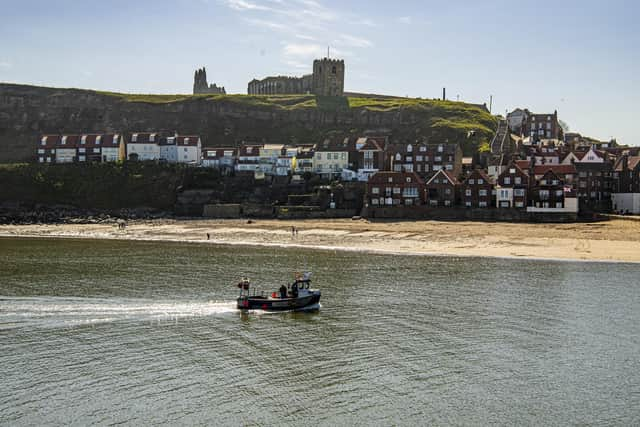Expert claims chemical leak may have caused thousands of crab and lobster deaths
Several Government agencies launched an investigation after dead crustaceans began washing up on beaches in October, and last week they concluded that a naturally-occuring algal bloom was to blame.However, marine pollution consultant Tim Deere-Jones has disputed their findings, after reviewing Environment Agency data, and said the water temperature has been too low to sustain large quantities of that type of algae in recent months.
He said the data, obtained via the Freedom of Information Act, shows that “very high concentrations” of the chemical pyridine were found in samples taken from dead crabs.
Advertisement
Hide AdAdvertisement
Hide AdIn a report, he stated the amount of pyridine found in crabs in Saltburn was more than 70 times higher than the amount taken from a control group in Penzance.


“Trace levels of pyridine can be found in some plant and animal products, but it is not naturally abundant,” he wrote.
“Pyridine is released into the environment as a waste product from industrial processes such as steel manufacture, processing of oil shale, coal gas production, coking plants and incinerators.”
The investigation has been funded by fishermen in the region, who claim their livelihoods are at risk because crab and lobster populations have been decimated.
Advertisement
Hide AdAdvertisement
Hide AdSome claim the crustaceans died after dredging, done in the River Tees as part of the Teesside Freeport project, released harmful chemicals into the water.
Mr Deere-Jones said dredging “may have released and dispersed pyridine or some other toxin” but he will not be able to reach a conclusion until the Marine Management Organisation, which regulates dredging activity, agrees to provide more information.
He added: “During the course of the mass marine mortality event the agencies have proposed an algal bloom of toxic karenia mikimotoi as a hypothetical cause despite the absence of proof of the presence of any Karenia in the relevant waters.
“Despite the identification of algal enrichment in the relevant waters, the concentrations of alga per litre of water has been shown to not achieve widely agreed ‘bloom’ levels.
Advertisement
Hide AdAdvertisement
Hide Ad“No scientific justification for this hypothesis has emerged and we are at a loss to understand why it has been advanced.
“Having conducted an in-depth review of chemical analyses of crab samples, it is proposed that the reported high concentrations of Pyridine in crab samples (up 439 mg/Kg) are a strong candidate as the causative factor of mass mortality.”
The Department for Environment, Food and Rural Affairs, which led the official investigation into the deaths, has said a naturally-occurring algal bloom is the most likely cause and there is no evidence to suggest that dredging is to blame.
A spokesman said: “Our sampling established that no pyridine was present in the water or sediment samples we collected but was detected in crab tissue from both impacted areas and non-impacted areas elsewhere in the country.
Advertisement
Hide AdAdvertisement
Hide Ad“As such, any levels detected in crab tissue are likely to be linked to biological processes and not necessarily from the environment.
“Significant testing and modelling has ruled out a number of potential causes including chemical pollution, sewage, animal disease or dredging.”
Comment Guidelines
National World encourages reader discussion on our stories. User feedback, insights and back-and-forth exchanges add a rich layer of context to reporting. Please review our Community Guidelines before commenting.
